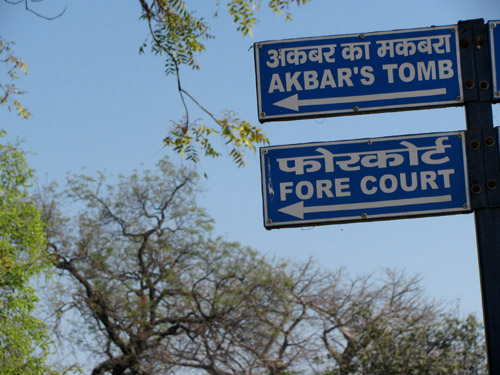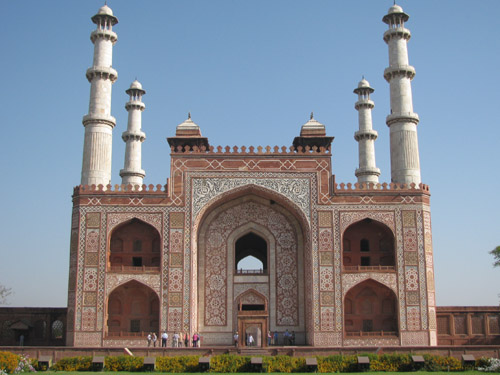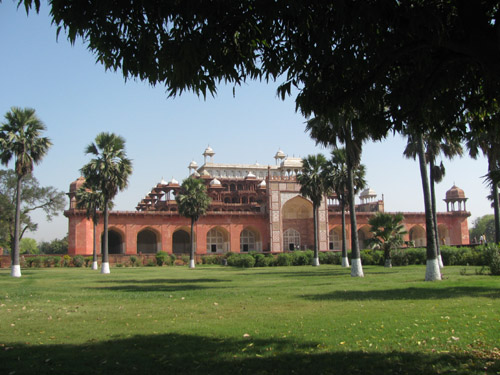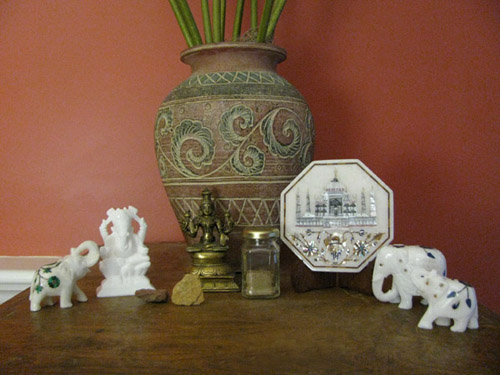My last day in Delhi had come all too soon. In contrast to the comfortable temperatures and rainy weather when I arrived at the beginning of March, 28 days later it was uncomfortably hot.

Prem took me to the Lodi Gardens Restaurant for brunch. The outdoor tables and chairs were draped in red cloth. It was so pretty!
The outdoor booths had filmy, flowing cloths around them, too, which reminded me of a tent.

We took a walk in the Lodhi Gardens, which is a favorite spot for Delhi wallas (people who live in Delhi) to have picnic lunches.


In the afternoon, I wanted to go to Dilli Haat, which I had read so many glowing reviews about. Prem tried to dissuade me, but I couldn’t think of anything else to do, so we went.
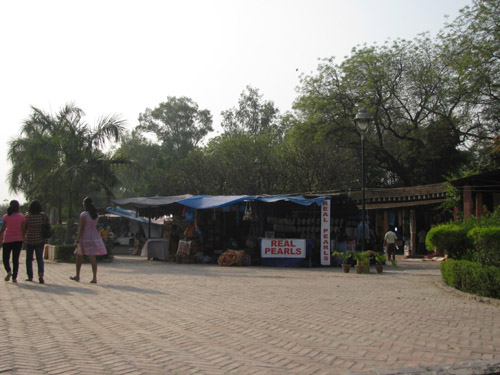
It looked like it had seen better days. Compared to the merchandise I had seen elsewhere in Rajasthan, and even at the other Dilli Haat location, there was nothing here that was even slightly tempting.

“Third quality merchandise,” Prem sneered. If anyone would know, after all his travels in Rajasthan, I would think Prem would. I agreed with him, and he teased me relentlessly for coming.
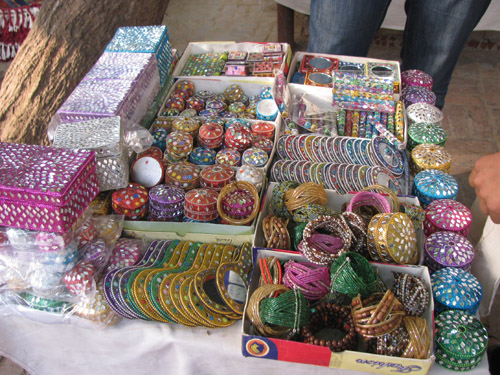
There was no doubt, there was a huge amount of cheap trinkets for sale here.
We moped around the rest of the day, thinking about how we would be parting ways very soon. The time finally came to take me to the airport.
What an incredible trip it had been! India had been every bit as magical as I had anticipated and even surpassed my expectations in many ways. I had seen some fabulous sights and met wonderful people.
I was really going to miss Prem. He had been such good company, and we had developed a friendship during our month-long journey. But I was trying not to feel sad. Prem had invited me to come visit him and stay with his family at his village home in Himachal Pradesh, and I had accepted. During this trip, he had spoken often in glowing terms of “my North India” at the foot of the Himalayas, and I was going to see it. I’m now planning to return to India in November 2012!









